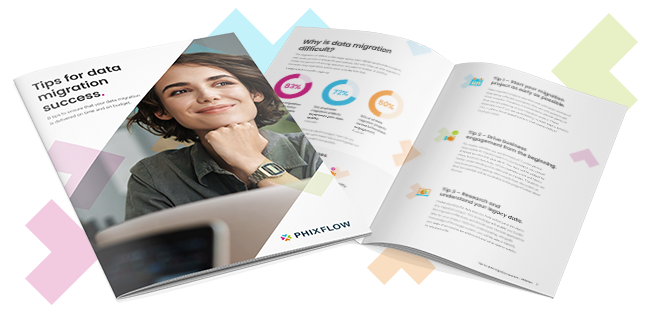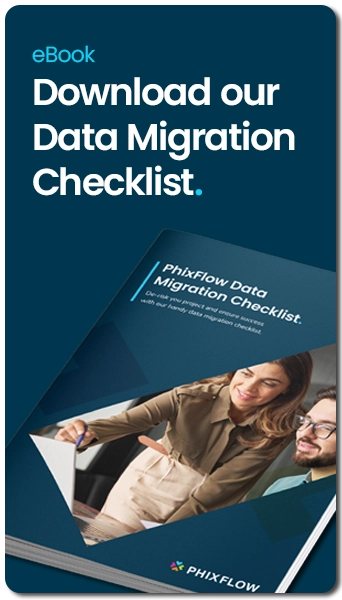Top tips for data migration success
We’ve put together our top tips to help you deliver your migration project successfully.
Why is data migration so difficult?
The migration of data is a vital stage during many digital transformation projects, and rarely are they a simple lift-and-shift job. But why? After all, data migration is simply the process of moving data from one place to another. In practice, however, data migrations are far more complex than that.
Independent research suggests:
- 83% of data migration projects either fail or exceed their budgets and schedules. (Gartner)
- 72% of all data migration projects experience poor data quality. (Experian)
- 50% of all data migration projects lacked full business engagement. (Experian)
Top 3 data migration challenges.
- Lack of business engagement.
- Access to subject matter experts
- Cross-function communication
- Perceived benefit not made clear
- Lack of legacy data knowledge.
- Incomplete or missing documentation
- Under estimating effort
- Shadow IT solutions
- Data quality issues.
- Poor data quality
- Incomplete data
- Inconsistent and invalid data
Clearly then, there are many hurdles that can derail a project. How can you ensure that your project doesn’t fall into the same traps? We’ve put together our 8 top tips for data migration to help you deliver your migration project successfully.
Top Tips for data migration success.
Tip 1 – Start your migration project as early as possible.
Data migration projects take time and with large volumes of data being collected and stored, they are only going to get more complex. Therefore, it is essential to allocate plenty of time into the planning of your migration project. This is especially true if you are consolidating multiple legacy systems into a unified cloud-based systems that covers multiple business areas.
Tip 2 – Drive business engagement from the beginning.
No matter whether you are the head of IT, or the person responsible for transformation in your business, you cannot attempt to move the data alone. Your data will be utilised by many business functions, whose business users will have a better understanding of its data and processes. Therefore, we would recommend getting them onside from the outset, as their knowledge will be invaluable to the project further down the line.
Tip 3 – Research and understand your legacy data.
Understanding the data that you hold will prove to be vital in any migration project. This knowledge will enable you to plan the migration effectively and decide upon the best approach to take for your project. With this understanding, alongside knowledge of the target system, you will be able to identify any gaps that need to be addressed and what data is surplus to requirements.
Tip 4 – Decide on your data migration strategy early.
Choosing an approach for your data migration project isn’t easy. Early identification of the most effective approach will allow ample time for planning and testing. There are many factors involved, such as the volume of data, the location of the data and the number of siloes/systems being combined.
There are many options to consider, depending on the size, scope and risk involved with your project. All of which will help you determine the right approach. The vast majority of data migrations fall into one of two approaches; big-bang or phased.
Ultimately, the decision on which approach to take should be based on the potential risk to the business, which is the most cost effective and minimises the load on the team, and how to best maintain the day-to-day operation of the business.

For the complete tips for data migration success, please download a copy of our e-book.
Introducing PhixFlow – More than ETL.
Our proven agile methodology and experienced team, combined with our fully integrated Low-Code platform for data migration and management, maximises project success whilst minimising risk.
PhixFlow has previously migrated CRMs, large telecom billing systems, and asset management systems – with databases containing 100’s of millions of records. Projects that use PhixFlow gain the following benefits:
- Increased business engagement
- More valuable data insights
- Improved data quality
- Significant reduction in migration costs
- Reduced risk – deliver projects on time
- Replicable processes through automation
